The World Health Organisation (WHO) had proclaimed the coronavirus explosion a ‘pandemic’ due to the stringency of the syndrome. The global death toll due to coronavirus has crossed 11000 with over 2,50,000 confirmed cases. According to WHO, pandemic is a worldwide spread of a new disease. It is a disease influencing a large volume of people. In this context, here is a list of the deadliest epidemics in history that managed to leave the world shocked!
Here are 10 of the terrible plagues from the past that have exterminated millions worldwide.
Black Death
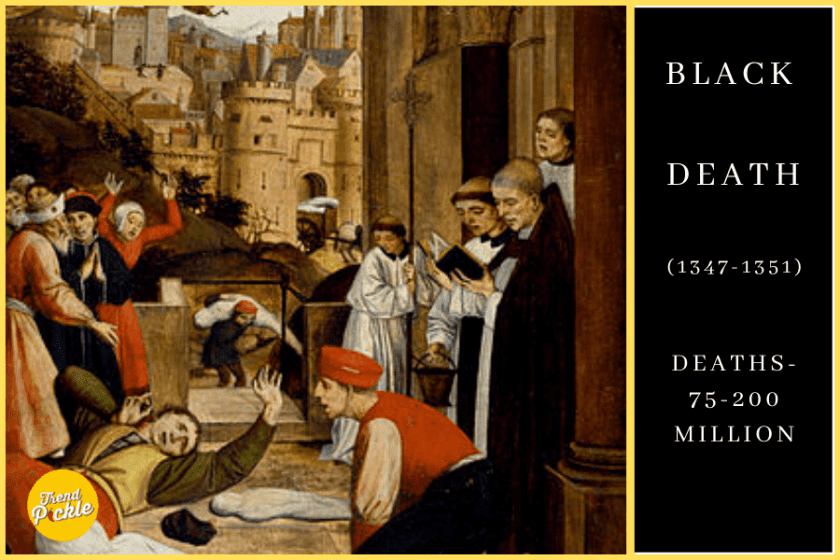
The Black Death was a deteriorating international plague of the bubonic scourge that blew Europe and Asia in the mid-1300s. The epidemic arrived in Europe in October 1347, when 12 ships from the Black Sea anchored at the Sicilian port of Messina. As a result, ample mariners aboard the ships were deceased.
People died during Black Death pandemic:
50 million people in Europe got deceased. Number of people curtailed was from some 80 million to 200 million. It assassinated at least 60 percent of the population in rural and urban areas.
HIV, AIDS Epidemic

HIV/AIDS or Human Immunodeficiency Virus is a transnational plague. AIDS cases were initially recorded in 1981. Since then, more than 25 million population worldwide have died from the ailment. Nowadays, more than 33 million people around the world are living with HIV, an estimated 1.1 million in the U.S. This is clearly one of the deadliest epidemics in the history of the world.
There were approximately 770,000 demises from AIDS in 2018.
The 2015 Global Burden of Disease Study, in a dissertation circulated in The Lancet, figured that the global incidence of HIV infection peaked in 1997 at 3.3 million per year.
Leprosy
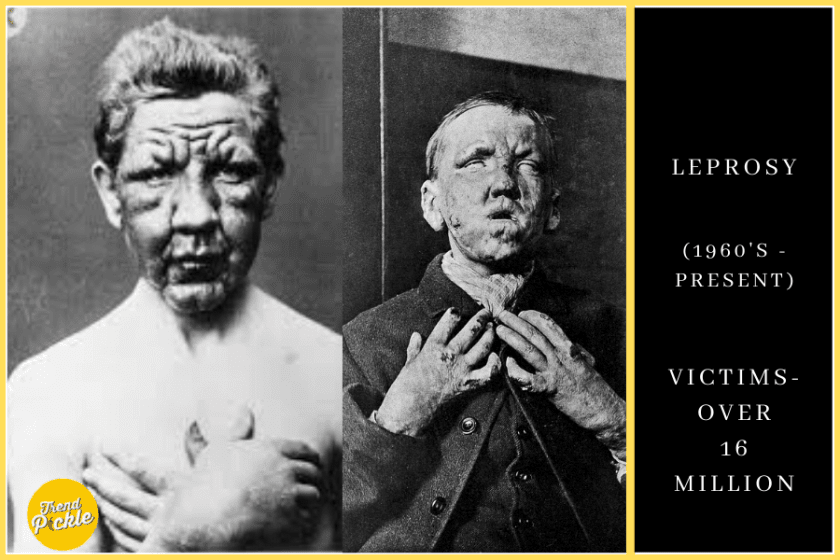
Leprosy is a contagious syndrome inflicted by Mycobacterium leprae, an acid-fast, rod-shaped bacillus. The ailment primarily entails the skin, the peripheral nerves, mucosa of the upper respiratory tract, and the eyes. However, leprosy is remediable and therapy in the early phases can deter disability.
Leprosy is an age-old malady, characterized in the literature of ancient civilizations. Around history, people afflicted have frequently been ostracized by their congregations and families.
In 2018, there were 209,000 leprosy cases globally, below from 5.2 million in the 1980s. The volume of recent cases recorded in 2016 stood 216,000.
Great Plague of London.
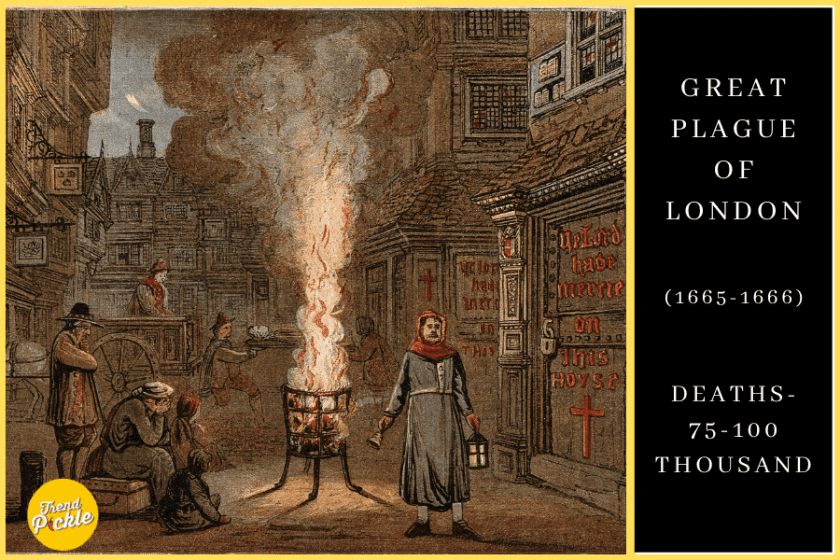
The Great Plague was an epidemic that spread in England between 1665 and 1666.
It led to the deaths between 75,000 and 100,000 people, which was more than a fifth of the entire population of London at the time.
Historically, it was speculated that the disease was an affliction of bubonic plague inflicted by the spread of a bacillus called Yersinia pestis disseminated through the bites of fleas living on black rats.
Sixth Cholera

The sixth cholera pestilence (1899–1923) was a prominent explosion of cholera inception in India, where it exterminated more than 800,000 people and strew to the Middle East, North Africa, Eastern Europe and Russia.
Demises in India between 1817 and 1860, in the first three pandemics of the nineteenth century, are tallied to have surpassed 15 million people. Another 23 million died between 1865 and 1917, during the successive three pandemics. Cholera deaths in the Russian Empire during an analogous time period exceeded 2 million.
Plague at Athens
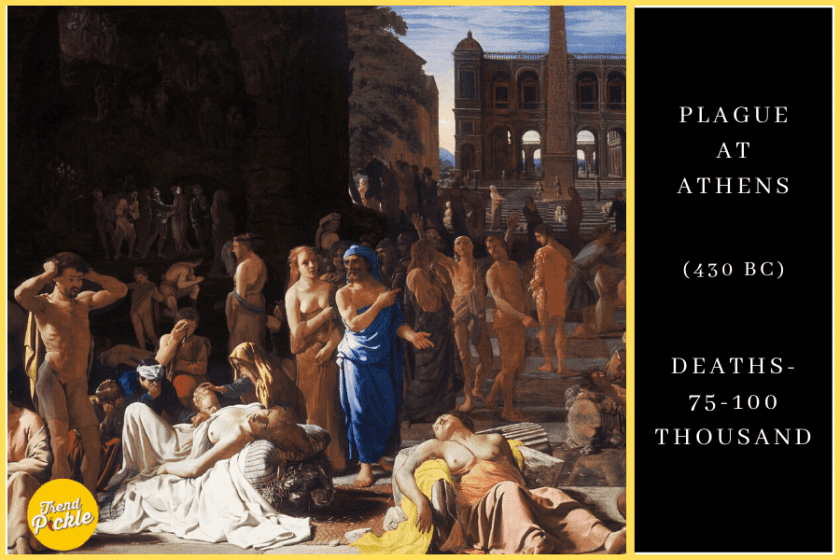
The Plague of Athens was a pandemic that ravaged the city-state of Athens in ancient Greece during the second year of the Peloponnesian War when an Athenian triumph still appeared within the stretch. As a result, the plague killed an approximate 75,000 to 100,000 people. Also, is believed to have permeated Athens main city through Piraeus, the city’s port and sole source of food and supplies.
Much of the eastern Mediterranean also saw an eruption of the disease, albeit with less impact. The plague had serious effects on Athens’ society, stemming in the dearth of allegiance to statutes and religious notion; in retort laws became stricter. As a result, it results in the punishment of non-citizens contending to be Athenian.
Antonine Plague
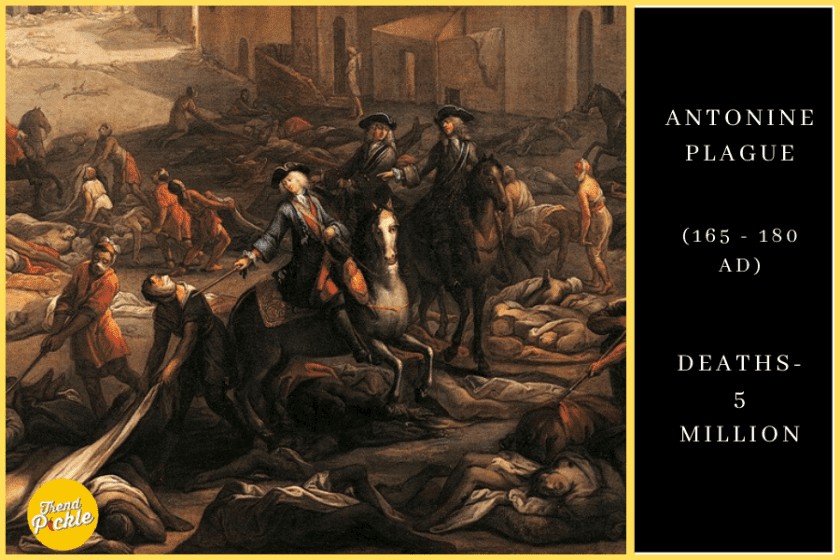
The Antonine Plague of 165 to 180 AD, known as the Plague of Galen was an ancient pandemic brought to the Roman Empire by troops returning from campaigns in the Near East. Scholars have suspected it to have been either smallpox or measles, but the true cause remains undetermined.
The disease broke out again nine years later. According to the Roman historian Dio Cassius (155–235), it caused up to 2,000 demises a day in Rome, one-quarter of those who were encompassed, giving the illness a mortality rate of about 25%.
The total deaths have been estimated at five million, and the disorder killed as much as one-third of the population in some areas and ravaged the Roman army.
Spanish Flu
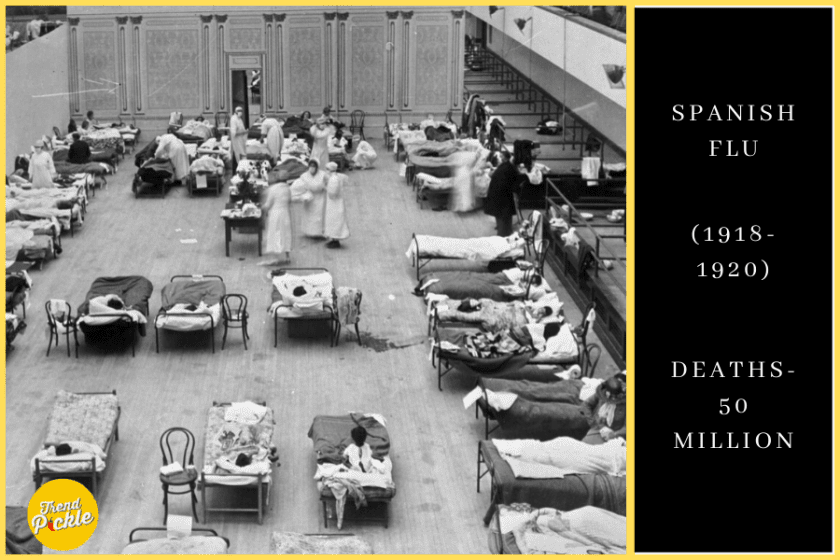
One of the deadliest flu outbreaks in history, it contaminated about 500 million people and killed over 50 million people. The epidemic was one of the two eruptions resulted in the H1N1 virus. Also, the extent of ailment was exacerbated by jammed hospitals and impoverished hygiene. This was one of the deadliest epidemics in history that shocked the early part of the 20th century.
Worried about the recent outbreak of the deadly Corona Virus? Here is everything you need to know about Coronavirus!
Asian flu

Asian flu of 1957 is also named as the Asian flu pandemic of 1957. was first observed in February 1957 in East Asia and that thereafter spread to nations worldwide. The 1957 Asian flu was the second major influenza pestilence to happen in the 20th century; it followed the influenza pandemic of 1918–19 and preceded the Hong Kong flu pandemic of 1968.
The Asian flu explosion resulted in an estimated one million to two million deaths worldwide. However, it is commonly contemplated to have been the least severe of the three influenza pandemics of the 20th century.
Plague of Justinian
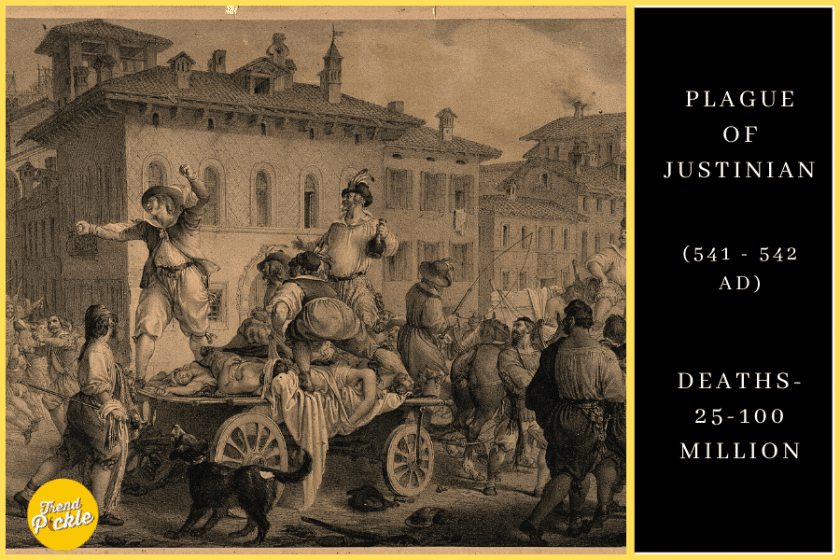
The bubonic plague demolished Byzantine Empire. This commemorated the onset of its deterioration. The scourge reoccurred periodically afterward. Also, some measures indicate that up to 10% of the world’s population expired.
Under his reign, the Byzantine Empire surpassed its considerable breadth, governing province that spanned from the Middle East to Western Europe.
This pandemic was so drastic, it killed off around 25 million people, which is almost 13% of the world’s population.
So, these were the deadliest epidemics in history that left the world shocked! Also, let us know what do you think of our list in the comments section below!

